Hi-Chew (History, Pictures, Flavors & Commercials)
If you love delicious and fruity candies, Hi-Chew is probably on your favorites list. You can enjoy many different varieties of this yummy gelatin-based fruit chew, and the sharpness and sweetness of the taste of each is really excellent. This is a product that has been around for some time, and there has not been a lot of major change to the recipes or contents of the candies.
This is a delightful pop-it-in-your-mouth candy, and you will love that you can get so many of these little treats for such a great price. These are a common feature in gas stations, but they can also be offered in movie theaters and grocery stores. If you have not tried this yummy little fruity snack, you need to make sure that you order some or pick some up!
Please leave a review or any memories of this snack in the comments at the bottom of this page. Thank you!
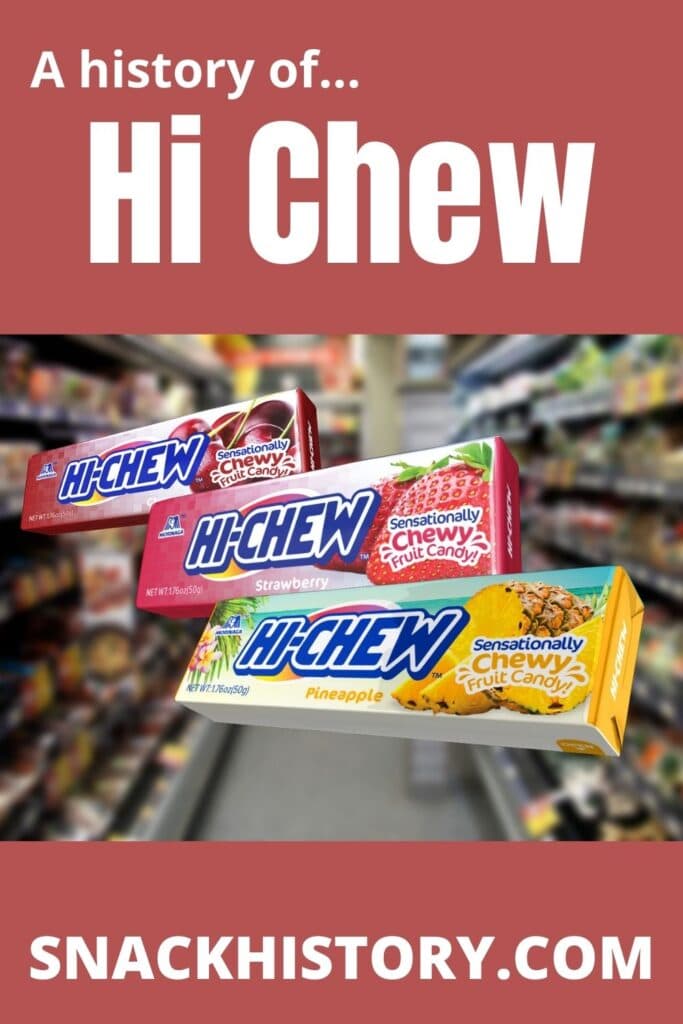
History
This candy has been around since 1975. Taichiro Morinaga created the recipe for the gum because there is a Japanese taboo against taking food out of one’s mouth. His goal was to make gum that you could eat when you were done chewing it. Morinaga had his first taste of candy in San Francisco and was inspired to create his own unique candy products.
He applied for a candy-making apprenticeship but was turned down due to his race. He decided that he would learn about the trade in the only way that was open to him. He became a janitor at a candy company and learned by observing. He decided that he would need to sail home to Japan to open his shop and make his products.
He went back to Tokyo and sold his first products as a street vendor. He called the marshmallows that were his first product “angel food”. He would ultimately build upon this success and open the Morinaga Western Confectionery Shop in 1918.
He had already made a caramel candy that was selling well, and he used the base for the caramel recipe to help him develop Hi-Chew. This new candy was called Chewlets, and it was first sold in 1931. The candies that Morinaga was making experienced reduced sales when World War II broke out. He was forced to rebuild his company from scratch after the war, and Chewlets were one of the first candies that were reintroduced as Hi-Chews.
The original candies were not sold individually wrapped, but today they are sold in their own foil with white wax paper. This keeps them from sticking to one another and prevents them from melting while they are being stored or transported. The candies are made with a white outer coating and a colored and flavorful interior. The candy is like a cross between chewing gum and fruit-flavored candy chews. Many people do not chew them like gum and just eat them like candies.
The product is a lot like the Mamba candy brand sold in Germany or like Starburst, which are familiar in the US. The most common markets to find all the flavors that are offered are Taiwan, Shanghai, Singapore, and Hong Kong. The candy is usually sold in specialty stores or gas stations in the US. Disney’s Epcot Center in Florida sells its own unique and smaller version of the candy.
Special editions do come out at times to celebrate certain fruits farmed in Japan or events. As of 2012, the product is gluten-free, which is great for those with allergies. This is not a kosher candy because it is made with gelatin that comes from pork products.
In the US, there are seventeen flavors of this candy treat. These flavors are watermelon, strawberry, green apple, dragon fruit, mango, grape, banana, melon, cherry, kiwi, acai, pineapple, blueberry, raspberry, black cherry, and in Hawaii, lilikoi. There are also new products that were released in 2016 that are sour in nature. Hi-Chew Sours offers various flavors with a sour twist, and Hi-Chew Bites are made with blended flavors such as mango and orange.
This candy is made in 170 different flavors, although they are not all sold in the same markets. This is a very unique business model as most candies would never have this many flavors developed for it, even to sell to various markets. This shows you just how popular this treat is and how versatile the base of this chewy, gum-like candy can be.
In 2018, the company offered a contest called “East Meets West”. In this contest, users voted on their favorite Japanese flavors of the candy. The most popular were introduced to a western audience. Dragon Fruit won the contest and was released in 2019.
As of 1999, Hi-Chews were 100 years old. This is a really long run for a candy in this space. It is a testimony to the hard work of its creator and everyone who has promoted it since that it is still sold in so many markets so successfully. Today the Hi-Chew is approved for space and is sent to space with Japanese astronauts. Hi-Chew is also sold in the home stadium of the Boston Red Sox.
Design
This candy is made in a unique way. The outer white layer is consistent in all flavors of the treat. The inner layer is colored like the flavor that it offers and has all of the taste of the candy contained in it. The outer layer is actually part of why the candies taste so good. The white layer is what gives the candy its freshness that reminds you of real fruit. Without this layer, you would just have a candy like any other fruit candy.
The two layers of candy are also part of what makes this candy chewable like a gum. Without the outer layer, the candy would dissolve rapidly in your mouth and would not be anything like a piece of chewing gum. The entire design of the candy is meant to mimic real fruit, and you will enjoy a very different taste experience when you choose this candy over others that are supposed to offer the same flavors. Many people report that the freshness of this candy is not like anything else that they have ever eaten.
Special Flavors
There are some unique Hi-Chew flavors that are not sold in the US that you might be able to order online to try. These are flavors that are often sold in Japan, but sometimes other Asian markets sell them exclusively as well.
- Blue Hawaiian
- Rainbow Sherbet
- Grapefruit
- Kiwi
- Lemon
- Banana
- Lychee
- Yogurt
- Chocolate-covered Strawberry
- Green apple mint
- Cantaloupe
- Sweet + Sour Lemon Crunch
- Chocolate Melon
- Apricot Peach
- Cranberry Grape
- Mango Pineapple
- Banana Fizz
- Pineapple peach
- Chocolate-Covered Banana
- Chocolate Banana Split
- Cotton Candy
- Asian Pear
- Strawberry Cheesecake
- Persimmon
- Okinawa Pineapple
- Kyushu
- Halloween Zola Bakes-limited time special
- Menchie’s Hi-Chew Frozen Yogurt – various flavors
- Hi-Chew Tropical Smoothie Froyo
This is not an exhaustive list, and there are some specialty flavors that have come and gone in Japan that were offered to highlight certain Japanese crops that were popular at the time. These blends would likely not have been sold anywhere else, and they are not easy to track down if you are looking to try them out. These are flavors like Seto Inland Sea Lemon.
Some markets also have mixed bags of candies like the Fantasy Mix and the Sweet and Sour bags of candies. These often must be ordered online if you want to try them in the US, but they are a fun way to try lots of flavors at one time which would normally require that you buy unique packages of all the flavors in question.
Logo
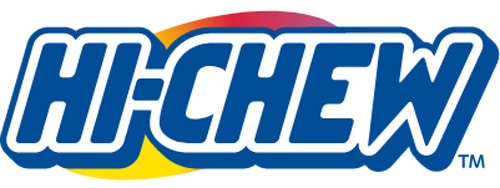
Buy Online
You can also buy Hi-Chew at Old Time Candy by clicking the image below.

Ingredients
From the Wiki about the product:
- Glucose Syrup
- Sugar
- Hydrogenated palm kernel oil
- Gelatin
- Natural and artificial flavors
- Strawberry juice from concentrate
- DL-Malic Acid
- Citric acid
- Emulsifiers
- Sodium lactate solution
- Natural colors from beta-carotene and carmine
The individual unique flavors might have different ingredients to create the color and flavoring in the middle of the chews, but this is the basic recipe that is behind all of the chews.
Nutrition
| Serving Size: | 10 pieces (50g) | % Daily Value* |
| Amount Per Serving | ||
| Calories from Fat | 41 | |
| Calories | 210 | |
| Total Fat | 4.5g | 7% |
| Saturated Fat | 4.5g | 23% |
| Trans Fat | 0g | |
| Cholesterol | 0mg | 0% |
| Sodium | 0mg | 0% |
| Total Carbohydrates | 41g | 14% |
| Dietary Fiber | 0g | 0% |
| Sugars | 31g | |
| Protein | 0.5g | |
| Vitamin A | 0% | |
| Vitamin C | 0% | |
| Calcium | 0% | |
| Iron | 0% |
- Percent Daily Values are based on a 2000 calorie diet.
Pictures
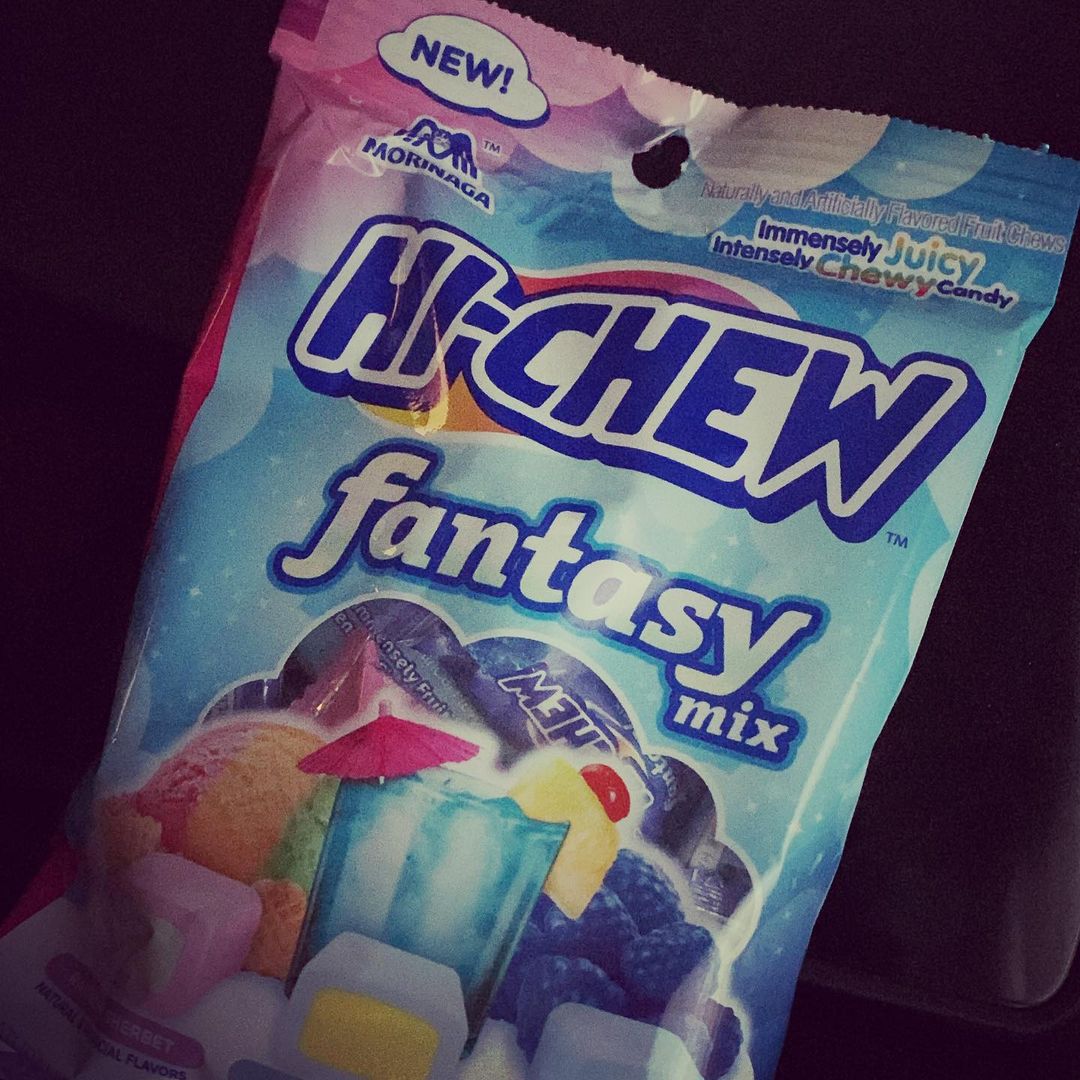
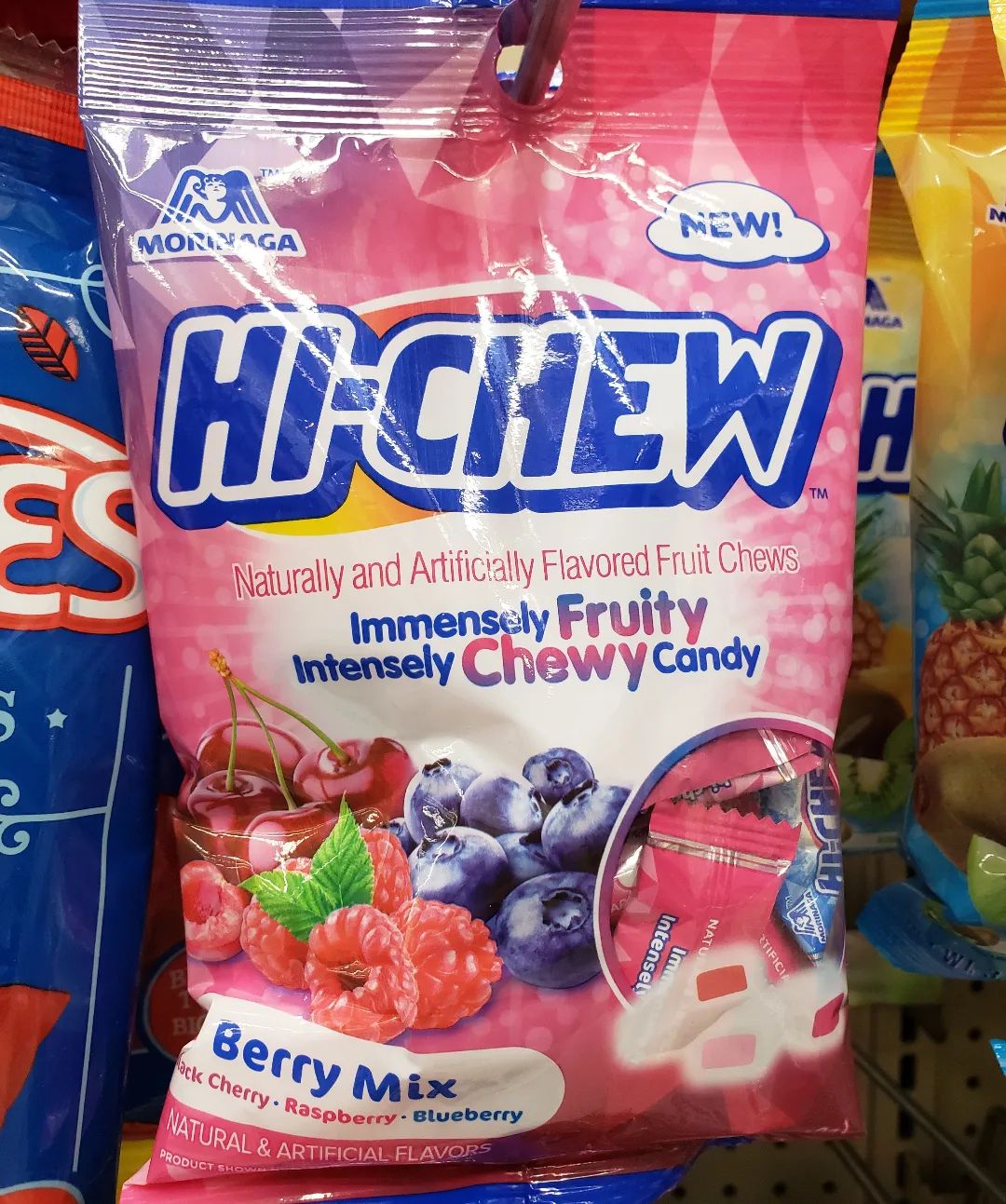
Livery
The Hi-Chew brand sells all of its products in very bright wrappings that feature images of the fruit flavors of each chew. The background of the bags and wrappers are vibrant and show geometric shapes in various colors. The logo is indicated in bright blue and white lettering, and the flavor of the candies are stated on the right side near the bottom of the bag or the wrapper.
The statement, “immensely fruity and intensely chewy candy”, is listed on each wrapper. This is a very colorful and fun branding choice that has held up very well over time. You can see the influence of the 90s on the wrapper choices, but the candies are so linked with this livery that there is probably no need to change it. This is an instantly recognizable candy that does not look like any other candy on the market.
Commercials:
The grocery store ad:
A very 90’s ad style:
A classic ad:

My name is Brianna and I love writing on all topics. Candy history fascinates me and I am passionate about sharing my love of this topic with everyone else!
Please leave a review or any memories of this snack in the comments below. Thank you!
Click here for a full A-Z list of Snacks and Candy
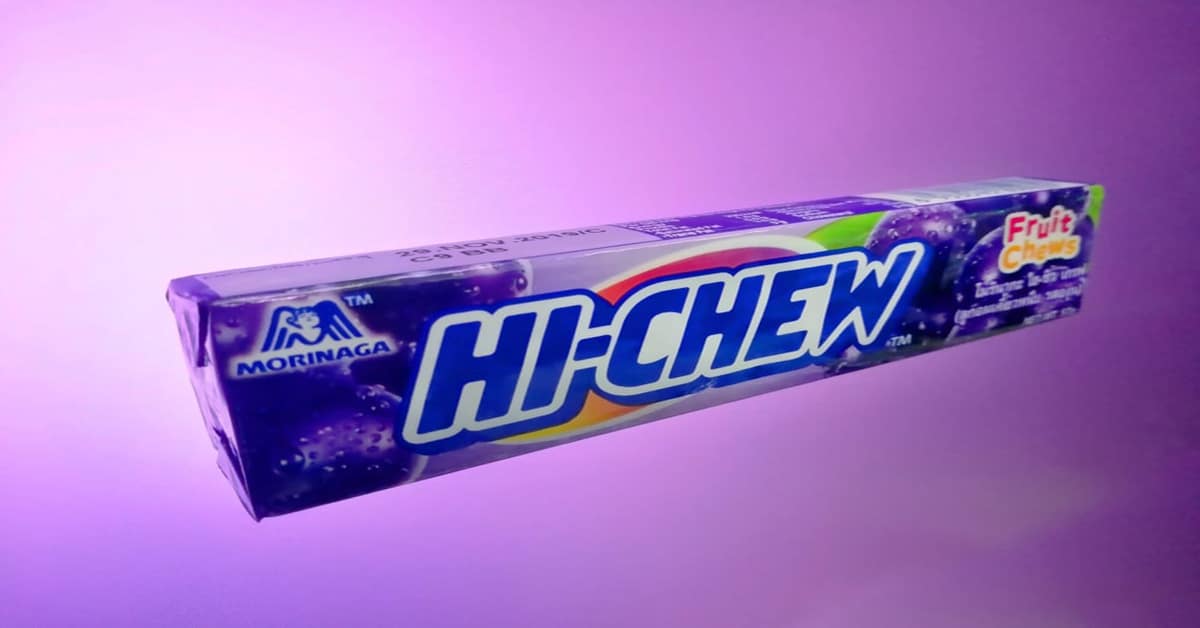
I love this candy. It’s not sickly sweet. Mango is my favorite flavor. I lived in the Philippines as a kid and grew up eating mangoes. I would like to try more flavors.